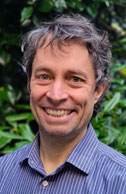Bringing open science, open models and nimbleness to forest ecology and land management
Dr. Eliot McIntire, Canadian Forest Service, Pacific Forestry Centre
Dr. McIntire got his PhD from the U niversity of British Columbia, in the Faculty of Forestry working on Forest Fires and Mountain Pine Beetle in Southern BC. He then completed a postdoctoral fellowship at University of Montana in Wildlife Biology, and held a Canada Research Chair in Forest Modeling in the Faculty of Forestry at Laval University. In 2011, he moved back to BC to work at the Canadian Forest Service as a Research Scientist. The diversity of topics that he has worked on has led him to his current research that he will present on today which is about building tools that can connect people and science across disciplines and policy spheres.
niversity of British Columbia, in the Faculty of Forestry working on Forest Fires and Mountain Pine Beetle in Southern BC. He then completed a postdoctoral fellowship at University of Montana in Wildlife Biology, and held a Canada Research Chair in Forest Modeling in the Faculty of Forestry at Laval University. In 2011, he moved back to BC to work at the Canadian Forest Service as a Research Scientist. The diversity of topics that he has worked on has led him to his current research that he will present on today which is about building tools that can connect people and science across disciplines and policy spheres.
Abstract: Forest management is challenged to meet many different – sometimes opposing – needs. For many of these needs, such as timber values, conservation values, public safety, and sustainability, science has a long history of contributing knowledge that has proven helpful. Forecasting forest values under changing fire, pest, disease, flooding and drought conditions that we are facing under the current and future conditions is becoming complicated. Furthermore, the role of First Nations in forest and land management is evolving and may have different objectives than the governments who have historically created forest practices. Unfortunately, the existing tools are being stretched beyond what they were often designed for. The open data revolution has begun in science, with ever increasing benefits to a diversity of users. But, data without understanding and insight are not a panacea.
Today, I will present the beginnings of how open science and open models are leading to new open tools, new conversations and new relationships. I will present several case studies showing some early examples of these tools in action that are assisting forest management and decision making. I will show examples of caribou conservation, First Nations, forestry planning, wildfire under climate change, protected areas management and how these are interacting with the best available science and with diverse participation.
One of the key features of these new tools is that they embrace nimbleness. This allows new data and new models to immediately flow into decision support tools; it allows the project to produce a “final” output at the start and data and knowledge holes can be identified at the start; and it allows for science to adjust quickly as new issues arise. While these open approaches are still in their infancy, they are being tried across Canada, from the forests of BC, the Ring of Fire regional assessment in Ontario, across the territories where mining claims are active, to name a few. They are creating new conversations between different areas of science, decision making approaches, and new levels of participation in the processes of land management.
